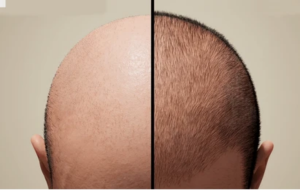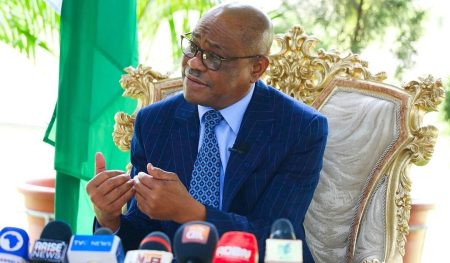Anthony Joshua, the former two-time world heavyweight champion, has revised his retirement plans, extending his boxing career potentially until 2027. Initially, his promoter, Eddie Hearn, had anticipated Joshua’s retirement by the end of 2026. However, an elbow injury requiring surgery in May 2025, followed by a subsequent delay in his comeback, has pushed back the timeline. Joshua’s last fight was a knockout defeat against Daniel Dubois in September 2024, a setback that further complicated his return to the ring. Now 35, Joshua is back in training, aiming for a comeback fight in early 2026, setting the stage for potential high-profile matchups later in the year or even into 2027.
The revised retirement timeline hinges on Joshua’s performance upon his return. Hearn acknowledges the significance of the comeback fight, stating that a loss would likely signal the end of Joshua’s career. He emphasizes the importance of choosing the right opponent for this crucial return, aiming for a fight that prepares Joshua for a potential clash against major contenders like Tyson Fury or Oleksandr Usyk in the summer of 2026. The pressure on Joshua is undeniable; a defeat in his comeback fight, particularly against an opponent he is expected to beat, would seriously jeopardize his future in the sport. This underscores the strategic importance of selecting an opponent who provides a suitable challenge while mitigating the risk of a career-ending loss.
Hearn’s strategic approach highlights the delicate balance between rebuilding Joshua’s momentum and propelling him back into title contention. The selection of the comeback opponent will be pivotal. It must be someone who offers a credible challenge yet does not pose an insurmountable threat. This fight will serve as a gauge of Joshua’s post-injury form and his ability to compete at the highest level after a significant layoff. The outcome will dictate the trajectory of his career, either paving the way for another shot at a world title or potentially signaling the end of his boxing journey.
The possibility of facing Tyson Fury in the summer of 2026 looms large in Joshua’s plans. This highly anticipated matchup has been a talking point in the boxing world for years, representing a significant event for both fighters and a major draw for fans. However, the realization of this fight depends on Joshua’s successful comeback and Fury’s availability. Should the Fury fight not materialize, Hearn assures that Joshua will be involved in another “huge fight,” underscoring the commitment to keeping Joshua engaged in high-profile contests. This strategy aims to maintain Joshua’s relevance in the heavyweight division and maximize his earning potential in the latter stages of his career.
Beyond the immediate focus on the comeback fight, Joshua’s extended timeline reveals a longer-term vision for his career. The potential to fight into 2027 suggests a desire not only to redeem himself after the Dubois loss but also to solidify his legacy in the sport. This extended timeframe allows for multiple fights and opportunities to regain a world title, potentially culminating in a grand finale against a top contender. This ambition demonstrates Joshua’s enduring passion for boxing and his determination to leave a lasting mark on the heavyweight division.
The narrative surrounding Anthony Joshua’s career has taken a dramatic turn. From a dominant champion to a fighter facing adversity, his journey now involves a calculated comeback and a renewed pursuit of glory. The next two years will be crucial, defining whether Joshua can rise again to reclaim his place among the boxing elite or if his career will conclude on a different note than initially envisioned. The pressure is immense, but so too is the opportunity. The world will be watching to see if Joshua can write the final chapter of his boxing story on his own terms.














